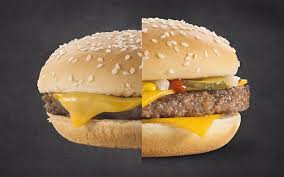There are few inventions in history that have change how we live forever. There was the telephone, the Internet, the camera and photography, and the newest invention being the image processing program known as, Photoshop. Take a second and think what the world would be like without those inventions. What the world would be like if we didn’t have the ability to take photographs? Let’s take it one step further and ask, what would the world be like if we didn’t have programs to alter them? Many people find themselves questioning what is fake and what is reality when they look at photographs. They also find themselves questioning their appearances. May I ask, are you happy with your appearance? Is there something about yourself that you would want to change? Do you compare your psychical appearance to models, or athletes? Do you hate taking photographs? Do you feel like you are not a photogenic person? These are normal fears that the average person faces. There are so many pressures from advertisements and manipulated photographs to be thinner, tanner, and more beautiful that we end up feeling down about our natural, un-manipulated selves.
The History of Photo Manipulation & Photoshop
Photography came from two ancient Greek words. Photo means “light”, and graph means “drawing”. Photography changed the world. Before photography people would only be able to share stories by word of mouth. Photography has allowed people to keep records of their lives and of world events. Photographs are proof we have that historical events occurred and they allow our memories to last forever. Photography has become a huge part of communication. It is included in magazines, books, posters, newspapers, and in most, if not all of advertisements.
Photo manipulation is the ability to edit an image; to either change small details or to completely change the overall aspect of the image. Some people don’t realize, but photo manipulation was possible before computers. Photo manipulation goes back as far as 1860. The iconic photo of Abraham Lincoln will go down in history as one of the first manipulated photographs ever created. The photograph was a composite of U.S. President Abraham Lincoln and the Southern politician, John Calhoun’s body.

Another example of photo manipulation being used in earlier years is the well-known photo of Stalin. He was known for airbrushing his enemies out of photographs.

There are two types of photo manipulations used today. There is technical retouching, which is done to restore or enhance photos, adjusts colors, contrast, sharpness, and white balance. Technical retouching focuses on the background of images and the overall look of an image. Then there is creative retouching. Creative retouching is considered an art form and it is used in fashion and beauty advertisements. Creative retouching makes changes to the objects and bodies in photographs.
Photoshop was invented and created by two brothers, Thomas and John Knoll. Their father was one of the first to buy an Apple II computer and thanks to him they both developed interests in computers and photography. They were both geniuses, each in their own way. Thomas was studying for his Ph.D. on image processing and John was working at Industrial Light and Magic in their special effects division, when the idea of creating a code to display grayscale images on a monitor popped into Thomas’s head. Thomas began coding for what they first called Display, and before you knew it, they were combining more and more ideas into the program. Thomas included, gamma correction, and loading and saving file formats. He developed a specific way to select and change portions of an image. The program had already had so many features that they changed the name from Display to ImagePro. ImagePro was so far ahead of any of the other current image processing programs that John and Thomas quickly looked for investors. They didn’t have much luck the first time around. All the corporate companies, including Adobe, turned them away. The manufacturing company Barneyscan was the only company interested in the Knoll brothers. They purchased two hundred copies of the program to shipped with their scanners. The business partnership between the Knoll’s brothers and Barneyscan did not last for very long. When that didn’t work out, John went back to Adobe to stir up more interest in ImagePro. In February of 1990, thanks to Russell Brown, Adobe’s Art Director at the time, the first version of Photoshop was finally launched. No one is sure where the name Photoshop came from but somehow, someway, it got the name and it stuck. That was nearly twenty-four years ago, and over those years Photoshop has released fifteen versions. Each version allowed editors to manipulate their photographs easier and more quickly. Photoshop has ended up changing the photography industry & advertisement industry forever. The history of photography will never be the same.
The Impact Photo Manipulation Has Had on the Advertisement Industry
There really isn’t a definition for the word ‘advertising’. When I think of advertisements I think of selling products and whether or not I want to buy those products. That is what advertising is to me. The purpose of advertisements is to persuade us, the audience, to buy a good or service. So how and why did advertising begin? Since the 1800’s humans have used advertisements to sell things. A particularly disturbing form of early American advertisements were use to sell slaves or to captured escaped slaves. They started with simple flyers, then ads were published in newspapers, and then they were printed in magazines. Since the 1920’s advertisements have grown and changed drastically. Advertisements have been incorporated into the radio, television, and the Internet. The advertisement industry does not have to worry whether ads will help to produce sales, as much as they have to worry about if they advertise properly, with ethical respect. (To review, ethics means, a set of morals or principles or values and conforming to accepted professional standards of conduct.)
You can see a major difference in advertisements between the 1980s and 1990s. Women were portrayed more natural in the 1980’s then they were in the 1990’s. There is such a big difference and we have Photoshop to thank for that. Photoshop has become a staple in the advertising industry. Because of Photoshop, those who work in the advertisement industry must be very careful how they photograph their products, and edit those photographs. Should they be honest with their photographs? Or should they enhance their photos to make their products look the best they can? This is an ethical challenge the advertising industry faces. Take McDonalds for a quick example. Look at this photo:

The burger on the left side is what customers actually receive when they purchase one. The burger on the right side is the edited version McDonalds advertise. Can you see the difference? Of course you can. McDonalds, along with many other chain restaurants, manipulate their photos to make their food more appetizing to their audience. Does it make it right? I don’t think so, but they can make their product look more appealing, so why wouldn’t they?
Those who are involved in the fashion industry must be the most careful. A thin line has been drawn, and if a company crosses it, the world will be sure to let them know.
Let’s look at a few examples of companies that took photo manipulation too far. The most famous example has been a 2009 Ralph Lauren print ad. They took one of their most popular models, Countess Filippa Hamilton, and manipulated the photo until her head was larger then her pelvis.
The photo on the left is manipulated. The photo on the right is the natural Hamilton.

The photograph, on the left, had caused so much outrage that Ralph Lauren was forced to apologize. They claimed to have only ever manipulated that photo and they promised to never do that again. Polo Ralph Lauren released this statement,
“For over 42 years, we have built a brand based on quality and integrity. After further investigation, we have learned that we are responsible for the poor imaging and retouching that resulted in a very distorted image of a woman’s body. We have addressed the problem and going forward will take every precaution to ensure that the caliber of our artwork represents our brand appropriately” (Harding, http://www.salon.com).
However, in that same year Ralph Lauren Australia published another shocking and disturbing photograph of model Valentina Zelyaeva. They took the already extremely thin, fit model and downsized her waist so she had no curves. The image on the left appears to be digitally altered. The image on the right is the untouched version.

Ten years later from Ralph Lauren’s mess up, the magazine Cosmopolitan made one of their own. In 2012 Cosmo wanted 19-year-old Demi Lovato to be on the cover of their July issue. Demi had been speaking bravely and openly that year bout her struggles with anorexia and bulimia. The entire article was about how she is still recovering from her terrible body image of herself. Then they edit her cover photo like this.

Another example of an over-manipulated photograph is the picture of Kourtney Kardashian on the cover of OK! Magazine just 7 days after having a baby.

What kind of message does this send to other new moms who have just had a baby? Not a good one. It is impossible to loose all of your baby weight in one week; however, with the help from Photoshop it’s not. What message do any of these photo-manipulated photos send to us?
The Impact on Us
Photo Manipulation impacts our society greatly. Like anything else, there are pros and cons to photo manipulation. (The cons overweigh the pros)
The pros are that with Photoshop you can change the color mode to black and white, you can remove red eye, and it can enhance the overall quality of the picture. It can allow those who don’t like having their picture taken, feel more comfortable taking photos because it can fix what they do not like. I write that last sentence as a pro because most people would view that as a positive thing. However, being able to drastically change body parts, has led to a whole list of psychological health issues. The misconception, created by manipulating photographs, has caused some people to develop eating disorders. It has led others to become depressed or extremely anxious. It has also caused a lot of people to have low self-esteem and search for surgical treatments and implants for a more permanent change. In the article, Recognizing and Combating the Negative Affects of Photo Manipulation, Dr. Erick Fisher Ph.D. says, “When photos in print media are manipulated to look better, they project an unrealistic image that many attempt to achieve and ultimately harm themselves” (Fisher,www.htichtag.com). Continually seeing thin, fit, perfectly structured faces, plastered all over on magazines or on television, eventually make people think that that is the norm. When it just simply isn’t the case. These manipulated photographs are changing the way we view ourselves. It is also changing how we see real beauty. We are developing body image issues because it is nearly impossible to look like the photographs we see on the magazine covers, but yet half of America is trying to achieve these impossible psychical goals.
Dr. Fisher also says this,
“Body image issues—that are precursors to eating disorders—develop earlier than you think. In my dissertation 20 years ago, I looked at how kids from sixth grade through college were comparing various body images through media and found that in both boys and girls there were very defined ways of comparing their bodies to what they saw as acceptable in the media. I firmly believe body image awareness begins in the preschool years, and the ability for it to morph into problematic issues from anxiety, depression, low self-esteem and other related issues are significant” (Fisher, http://www.hitchmag.com).
Researchers have found, through psychological studies, a connection between media exposure and women’s unhappiness of their bodies. “An article in the Psychological Bulletin states that ‘…the images of women presented in media today are thinner than past media images of women, thinner than the actual female population, and often thinner than the criteria for anorexia” (Ascensio, voices.yahoo.com).
The American Medical Association (AMA) recently took a stand against image manipulation in advertising. They strongly believe that alterations of the body, produced in image manipulative programs like Photoshop contribute to body image issues which lead to emotional problems and eating disorders. (Diller, http://www.huffintonpost.com).
Israel, has also taken a stand against digitally altered images. On March 12, 2012 legislation announced plans to enact the “Photoshop Law”. The law was supposed to put “…regulations on underweight models as well as limits to digital alterations of advertisements. The law requires any ad agency to disclose if photos of models underwent Photoshop alteration to make the subjects appear thinner” (Sieczkowski, http://www.ibtimes.com).
Celebrities have even begun to bring awareness and attention to this heated debate. I was in my early teens in 2002 but I remember clear as day my mom making me watch a special on Jamie Lee Curtis and the bare-it-all photo shoot she decided to do. She had felt, even back then, that something needed to be done about these over-manipulated photography disasters. When Campbell Brown from the Today show interviewed Curtis she asked her if she was scared to be photographed without any makeup. This was Jamie Lee Curtis’s answer,
“What I’m scared of is that that’s what women have become accustomed to needing to feel good about themselves. And show business and media and magazines don’t help by promoting these images of women that are completely airbrushed, that are completely altered, to then give you, the unsuspecting buyer, this fake sense of that that’s what people are supposed to look like” (Ryan, http://www.sfgate.com).

Other Celebrities since 2002 have also promoted the idea of no airbrushing on their photographs. Kate Winslet drew attention to herself when she took action against GQ magazine for digitally altering her body in the photos they took of her. She was upset that they made her too unrealistically thin. She told Britain’s GMTV,
“I don’t want people to think I was hypocrite and had suddenly gone and lost 30 pounds, which is something I would never do, and more importantly, I don’t want to look like that!…They made my legs look quite a bit thinner. They also made me look about 6 feet tall, which I’m not, I’m 5 foot, 6 inches” (Kite, http://www.beautyredefined.net).
Brad Pitt has also made a stand against photo retouching. He requested Chuck Close, a photographer who takes very close detailed portraits, to do his W Magazine cover shoot.
Could It Get Any Better? The Conclusion:
How can we change the advertisement industry back to the way it used to be, before photo manipulation? It could only get better if there were restrictions on how much a photo could be edited. There should be limits on how much of the body could actually be transformed. Some think that magazines should not even promote diets, weight loss, or flawless skin. Seventeen Magazine has been known to photo edit properly. They have even made a pledge to be honest in their photographs. They will only edit clothes, not the actual models. They have recognized the impact that drastic editing has caused on teens and young women across the globe. They want to influence their young readers properly so they took charge and they did something about it.

As you have read, photo manipulation has changed the advertisement industry and the way we view ourselves. It has twisted the perception of the human body to something unrealistic. It has allowed photographs to be manipulated to the perfect contrast, lighting, and formats but it has also allowed manipulated photographs to influence some people to think poorly of their appearance which ends up lowering their self-esteem. The more celebrities and others who get involved in promoting the awareness of the problems caused by photo manipulation, the more likely the advertising industry will have to permanently change the way they edit their photos and force them to change how they promote products, fashion, and “beauty”.
Bibliography:
20 Years of Photoshop. Resources, Web Design. February 1, 2010.
www.webdesigndepot.com/2010/02/20-years-of-adobe-photoshop/
Z.J. Ascensio. January 11,2012. The Effects of Photo Manipulation in the Media.
http://voices.yahoo.com/the-effects-photo-manipulation-media-10791151.html
Vivian Diller. Posted July 7th, 2011. Is Photoshop Destroying America’s Body Image?
http://www.huffingtonpost.com/vivian-diller-phd/photoshop-body-image_b_891095.html
Erik Fisher. Recognizing & Combating the Negative Affects of Photo Manipulation.
http://www.hitchedmag.com/article.php?id=1217
History of Photography. www.scphoto.com/html/history.html
Lexi Kite & Lindsay Kite. November 30th, 2011. Beauty Redefined.
http://www.beautyredefined.net/photoshopping-altering-images-and-our-minds/
Mail Foreign Service. October 21, 2009. Second Ralph Lauren Model in Photoshop Row as She’s Airbrushed to Become Impossibly Skinny
http://www.dailymail.co.uk/news/article-1221675/Ralph-Lauren-new-photoshop-row-SECOND-image-model-airbrushed-make-head-larger-waist-emerges.html
Retire. June 22, 2010. Photo Manipulation with Adobe Photoshop and It’s Effects on Society. guide.wikinut.com/Photo-Manipulation-With-Adobe-Photoshop-And-Its-Effects-On-Society/qnig5dqn/
Cavan Sieczkowski. Supermodels Without Photoshop: Israel’s ‘Photoshop Law’ Puts Focus On Digitally Altered Images [PHOTOS]
http://www.ibtimes.com/supermodels-without-photoshop-israels-photoshop-law-puts-focus-digitally-altered-images-photos
The History of Photoshop. December 13, 2005.
http://www.creativeblog.com/adobe/history-photoshop-12052724#comments-list










